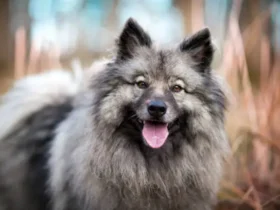Contents
1. Managing Costumes and Decorations
Choosing Safe Costumes
- Comfort First: If you decide to dress up your pet, ensure the costume is comfortable and doesn’t restrict movement, vision, or breathing. Avoid costumes with small parts that could be chewed off and swallowed.
- Proper Fit: Make sure the costume fits well. A too-tight or too-loose costume can cause discomfort or pose a choking hazard.
- Try It On: Before Halloween, let your pet wear the costume for short periods to ensure they are comfortable and can move freely.
Avoiding Potential Hazards
- Toxic Materials: Ensure the costume is made from non-toxic materials. Pets may chew on costumes, and toxic fabrics or dyes could cause harm.
- No Small Parts: Avoid costumes with small or detachable parts that could be swallowed or pose a choking risk.
- Reflective Elements: Opt for costumes with reflective elements if you plan to take your pet outside in the dark, ensuring they are visible to drivers.
Decorations and Setup
- Pet-Friendly Decor: Choose Halloween decorations that are safe for pets. Avoid decorations with small parts, sharp edges, or toxic materials.
- Secure Items: Ensure that decorations are securely placed and out of reach of curious pets. This prevents them from being knocked over or ingested.
- Avoid Hazards: Be cautious with candles, especially if they are in pumpkins or other decorative items. Opt for battery-operated candles instead of real ones.
2. Handling Trick-or-Treaters
Managing Doorbell Dings
- Calm Environment: The constant ringing of the doorbell and the arrival of strangers in costumes can be stressful for pets. Create a quiet space away from the door where your pet can retreat if they feel overwhelmed.
- Leashed or Contained: Keep your pet leashed or contained in a separate room when answering the door to prevent them from darting out or getting frightened.
Handling Stress
- Safe Space: Set up a safe and comfortable area for your pet where they can feel secure. This could be a quiet room with their bed, toys, and some calming music.
- Desensitization: If your pet is particularly anxious, practice desensitization by gradually exposing them to doorbell sounds or Halloween decorations in the days leading up to the holiday.
3. Treats and Food Safety
Avoiding Toxic Foods
- No Candy for Pets: Keep Halloween candy out of reach of pets. Chocolate, xylitol (a sugar substitute), and other candies can be toxic to dogs and cats.
- Pet-Safe Treats: If you want to give your pet a special treat, choose pet-safe treats made specifically for them. Avoid giving them human food, especially sweets and foods high in fat or sugar.
Proper Storage
- Secure Candy: Store candy and other Halloween treats in a secure place where pets cannot access them. This prevents accidental ingestion of harmful substances.
4. Ensuring Pet Identification
ID Tags and Microchips
- Updated Information: Ensure your pet’s ID tags and microchip information are up-to-date. In case your pet escapes or gets lost during Halloween festivities, proper identification increases the chances of a quick reunion.
- Reflective Gear: If your pet will be outside or visible to trick-or-treaters, consider adding a reflective tag or harness to make them more visible.
5. Managing Pet Behavior
Training and Socialization
- Positive Reinforcement: Use positive reinforcement to train your pet to behave calmly around Halloween distractions. Reward them for staying calm during costume try-ons or when people are at the door.
- Socialization: If possible, expose your pet to different costumes and people in a controlled manner before Halloween to help them adjust to the holiday’s excitement.
Supervision
- Constant Supervision: Always supervise your pet during Halloween activities. Even if they seem calm, keeping an eye on them helps prevent accidents and ensures they are not exposed to any hazards.
6. Special Considerations for Different Pets
Dogs
- Exercise and Play: Ensure your dog gets plenty of exercise and playtime before Halloween night. This helps to reduce anxiety and keep them calm during the festivities.
- Walks and Exercise: Plan walks and outdoor playtime before dusk to avoid the Halloween hustle and bustle.
Cats
- Indoor Safety: Keep indoor cats inside during Halloween to avoid any accidental escape or stress from outdoor activities.
- Hiding Spots: Provide your cat with cozy hiding spots where they can retreat if they feel stressed.
Small Pets and Exotic Animals
- Secure Enclosures: Ensure that small pets like hamsters, guinea pigs, or reptiles have secure enclosures that cannot be disturbed by Halloween activities.
- Temperature and Light: Maintain a stable environment for exotic pets, including appropriate temperature and lighting, to prevent stress.
7. Preparing for Emergencies
Emergency Kit
- Pet First Aid Kit: Prepare a pet first aid kit with essential items like bandages, antiseptic, and any medications your pet may need. This ensures you are ready for any minor injuries or health issues that may arise.
- Emergency Contacts: Have a list of emergency contacts, including your veterinarian and the nearest emergency animal clinic, readily available.
Emergency Plan
- Escape Routes: Ensure you have a plan for quickly locating and retrieving your pet if they become scared and try to escape. Practice your plan in advance to ensure you can act swiftly in case of an emergency.











Leave a Reply